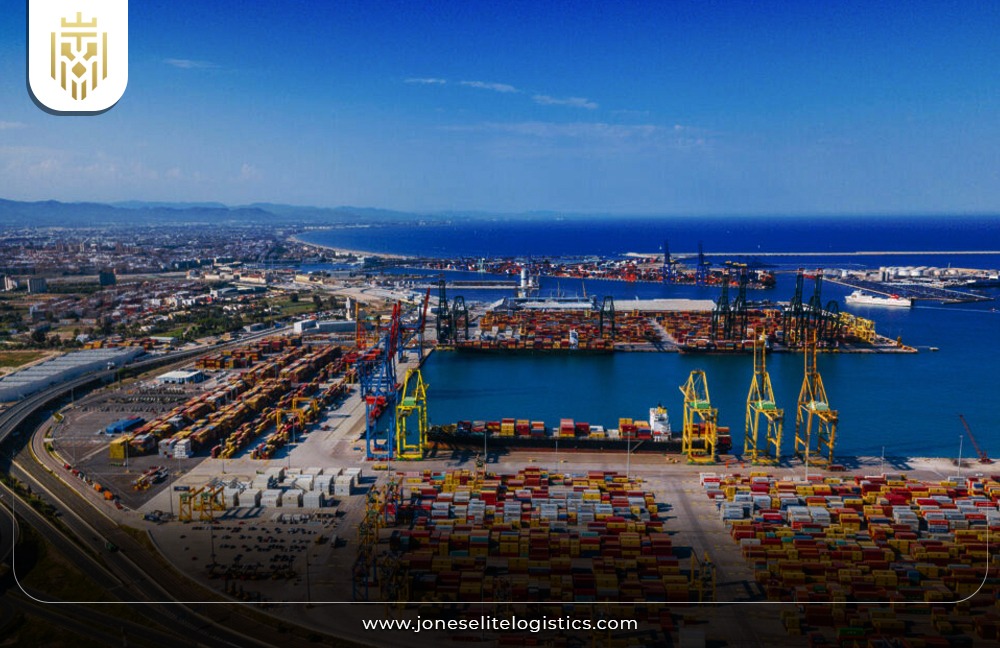What is Supply Chain Resilience?
Supply chain resilience is defined as the improvement of the supply chain’s aptitude in preparing for, mitigating, adapting to, and recovering from disruptions. It specifies and implements ways through which a supply chain can operate optimally or be restored to optimal operation after disruptions such as natural calamities, budget alteration, or disruption of supply. The development of organizational capacity for resilience enhances organizational options, lessens dependence, and limits the disruption of an event in your business.

Importance of Supply Chain Resilience:
This paper aims to discover supply chain resilience and identify the factors that can cause disruptions to the supply chain, which affects customer satisfaction and continuity of business. It assists organizations in handling risks and uncertainties, dynamic market environment, and stability of competitive advantage. The benefits of bolstering business continuity are related to direct cost savings and improved reliability and efficiency after a disruptive occurrence, as well as the preservation of the firm’s image and brand.
Strategies Of Supply Chain Resilience:
Supply chain agility measures are inventory management, supplier diversification, nearshoring, multisourcing, ecosystem partnership, inter-platform product commonality, and effective demand estimation. These strategies assist in reducing risks, increasing business responsiveness, and guaranteeing the constant supply of products and services in emergency situations, thus continuing business operations and customer satisfaction.
Inventory Management:
Well-maintained inventory management enables firms to maintain adequate stock about demand but simultaneously avoid having too much of it. Tools such as safety stock, JIT, and real-time inventory tracking enable the firm to put in measures that will help it avoid or minimize its vulnerability to supply disruptions hence effectively managing supply shortages or delays.

Supplier Diversifiaction:
Supplier Diversification is a strategy where firms obtain their supplies from different sources so as to minimize their dependence on one supplier. This strategy reduces and minimizes risks that come along with suppliers such as natural calamities or political instabilities; it also helps in the flexibility of supplies since there are backup suppliers.

Nearshoring:
Nearshoring refers to the process of moving the production or purchasing closer to the home market. This shortens the lead time, ensures low transportation costs, and guards against all the pitfalls of long-transported goods. Nearshoring thus increases the supply chain flexibility by enabling quick response to market signals and decreased reliance on supply from foreign sources.

Multisourcing:
Multisourcing, on the other hand, is where an organization collaborates with other suppliers for the same goods or services. It plays the role of diversifying risk, guaranteeing continuity of supply, and enhancing affordable prices. Multisourcing tends to help firms make adjustments or switch suppliers on short notice in case of disruptions and hence it contributes to the stability of operations and the least disruption on the supply chain.

Ecosystem partnerships:
Ecosystem partnerships mainly entail the engaging of players in the ventures including the suppliers, customers, and logistic companies in order to make the supply chain stronger. These partnerships enable the exchange of information, problem-solving, and response to disruptions among the partners. Having many partners allows firms to manage problematic circumstances more successfully and ensure a stable supply chain.
Platform Product Harmonization:
Platform product modularity entails the uniformity of the components and the processes of successive products to ease production and procurement. By so doing, it minimizes the development of large and complex structures, accelerates the adaptability of production, and increases the chances of responding to disruption. Harmonization strengthens stability because necessary components are supplied at the same high standard, plus they are reliable.
Forecast Error:
The term forecast error is defined as the difference between the demand forecasted and the actual demand. It is considered of uttermost importance to ensure that one correctly forecasts the demand since this will determine the levels of inventory, production plans, and resource management of a supply chain. Enhancing the forecast accuracy by means of analytical tools and up-to-date information helps corporations avoid overstocking and stock-out conditions, and effectively manage supply chain fluctuations.

How to Measure Supply Chain Resilience:
Performance indicators that can be used while measuring the reliability of the supply chain include; recovery time, supply chain continuity, customer inventory, and suppliers. This is done through such measures as TTR, fill rates, and an agency’s exposure to supply chain risks that help determine its resilience when disrupted. Further, stress testing and stress scenarios support the resilience assessment of a company since it considers response scenarios of a certain threat.
Advantages of Supply Chain Resilience:
Identifying supply chain resilience brings many advantages such as better risk control, cost reduction, and increased confidence for the stakeholders. It enhances customer satisfaction as it delivers quality products on time: It enables the sustainability of business growth as it reduces the period of disruptions to the business operations: and It helps in achieving agility so that the business can respond to changes in the market. Arising from the above argument, resilience in supply chains enables supply chains to handle uncertainties in a better way while sustaining competitive edge and operational performance.
Improved Risk Management:
Risk management in resilient supply chains requires identification of the risks, possible ways of containing or minimizing them, and then planning for the same. These strategies minimize the effects of disruptions, as well as guarantee the continuity of the supply chain and improve the first gross response capability to unexpected occurrences, thereby, protecting the supply chain operations stability.

Cost Optimization:
The strategy of cheapest costs in resilient supply chains is achieved through inventory management, fair consumption rates, and overall efficiency. Techniques like JIT inventory, multisourcing, and nearshoring are effective in reducing expenses that result from disruptions, transportation, and storage of resources hence fostering efficient use of resources at lesser expense.
Stakeholder Confidence:
Customers have confidence in their investment, and suppliers’ reliability creates a strong and transparent chain of supply. Risk specialization, performance, and short response time to disruptions lead to investors’ trust, customers, and partners. This confidence can lead to stronger relationships, investment in the business, and increased business stability.

Improved Customer Satisfaction:
This is because supply chain resilience results in customer satisfaction because it ensures that products are available as and when they are needed by the customers. By reducing risks to their services, organizations can fulfill client’s needs and expectations, avoid delays, and generally improve the quality of services, which would increase customer retention rates and thus come back to the business.
Sustainable Growth:
This is because sustainable growth is only achieved when the supply chain is able to persevere and continue operating even when faced with market changes or disruptions. The predictability of their cash flows also helps the businesses plan for long-term goals, invest in research and development, and even increase production without being at the mercy of constant disruptions to supplies, hence promoting the sustainability of business development.
Enhanced Agility:
Greater agility in an assured supply chain means achieving flexibility in a supply chain in response to prevailing trends something as swings in demand or disruptions in supply. The supply chains that are agile can easily switch strategies, redistribute resources, and set up contingency programs that can help to ensure that operations continue to operate efficiently and intact sufficiently to meet market needs, thus preserving competitive advantage.
Challenges Of Supply Chain Resilience:
Supply chain risks include sudden visibility, material availability, digital transformation issues, and inadequate market responsiveness. These problems make the prediction of disruptions and the subsequent ability of a company to adapt detrimental to the overall operational performance, cost control, and reduced customer satisfaction.
Lack of Supply Chain Visibility:
There is no supply chain visibility to control the flow of goods, to track inventories, and predict disruptions. This results in the following disadvantages, time wastage, delays in the organization’s chain of supply, and high chances of having Stock out or Overstock. Real-time tracking and data analysis are some of the essential technologies that must be incorporated if organizations are to deal effectively with risks.
Material Scarcity:
This problem becomes a severe obstacle by affecting production flow and raising costs due to material shortages. The exploitation of limited sources and limitations in the supply of material globally make it even worse. Supplying and managing material shortages’ risks involve supplier proliferation, stockpile reserves, and building further forms of material sources.

Digital Transformation:
Digitalization is a key issue and a significant breakthrough for many supply chains, as it implies the use of new technologies to develop and improve them. Therefore, crisis, resistance to change, loss of opportunities, high implementation costs, and required skills are some of the challenges and forces that may hinder change. The solutions to these require strategic planning, investment in technology, as well as training of the workforce.
Lack of Responsibility to Respond to Market Needs:
Failure to be answerable for the market requirements is a demerit since it leads to uncoordinated supply chain approaches and customer disenchantment. These seem to stem from stringently bureaucratic operations, lack of communication, and improper market assessment. Overcoming it entails developing a responsive culture, enhancing market sensitization, and enhancing coordination between supply chain function and market requirements.
Innovative Technologies Strengthening Supply Chain Resilience:
AI, IoT, blockchain, and cloud-computing technologies profoundly improve supply chain vulnerability. The use of technologies in the supply chain also offers value by giving real-time updates, increased transparency, efficiency, and quick reaction to distortions. Thus, such implementations create a stronger, leaner, and more efficient supply chain management system.
Artificial Intelligence:
It is pointed out that AI enhances the adaptability of the supply chain by means of prognostications, predicting the potential demand in stock, and decision-making, independently. Through patterns, algorithms used in AI can come up with the best inventory quantities and help recognize a disruption when it happens, so that business continuity can be sustained.

Internet of Things (IoT):
The IoT improves the robustness of the supply chain because products, tools, and assets are easily trackable and manageable through a connection to the internet. This causes the IoT devices to be involved in compiling and forwarding data which aids in the tracking, monitoring, and performance of condition maintenance that is highly effective in avoiding interruptions and enhancement of operations.
Block Chain:
Blockchain technology enhances the ability of the supply chain to respond to disruptions since it is an efficient way of having distributed and secure ledgers. It also increases traceability, decreases fraud, and increases the level of trust from the stakeholders. It will also keep data pure, fasten the flow of business, and have a very efficient method of solving disputes to make the supply chain even more credible.
Cloud Computing:
Cloud computing is, therefore, beneficial to the supply chain since it offers efficient, adaptable, and accessible solutions for data storage and data processing. They can support the contemporarily designed cooperation, work on shared databases, and integrate systems used by the supply chain members. Thanks to cloud-based platforms, resources are effectively organized, responsive changes can be made, and sound decisions are made.
FAQs
1) What is Supply Chain Resilience?
Supply chain resilience then is the capability of a supply chain to prevent or mitigate a disruption incident, respond to it, and be able to quickly restore normal operations in order to keep business going and satisfy end customer needs.
2) What are the advantages of Supply Chain Resilience?
They include better management of risks, cost efficiencies, increased shareholders’ confidence, satisfied customers, long-term revenue growth for organizations, and more efficient organization responsiveness to the changing market environment.
3) What are the challenges of Supply Chain Resilience?
These factors can be enumerated as follows: little supply chain transparency and control, scarcity of materials, transportation challenges, and the firm’s inability to meet market demands and adapt to innovations; all of which affect disruption handling.
4) What are the Importance of Supply Chain Resilience?
Supply chain continuity is essential in reducing the impact of disruptions, sustaining business operations, satisfying customers, reducing expenditure, and sustaining a competitive edge over change and the actualization of the unexpected.







